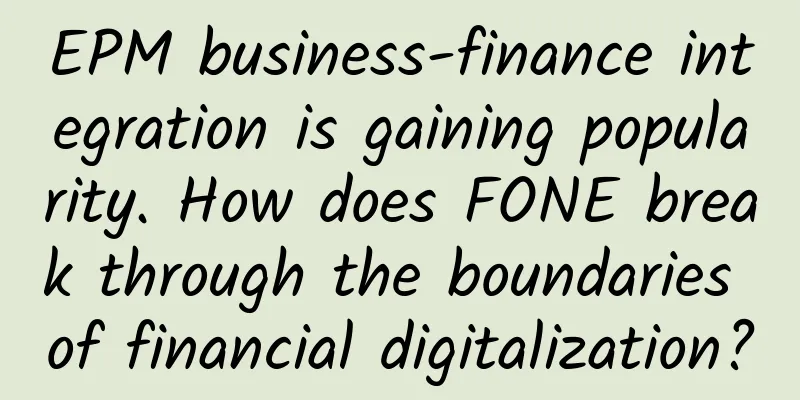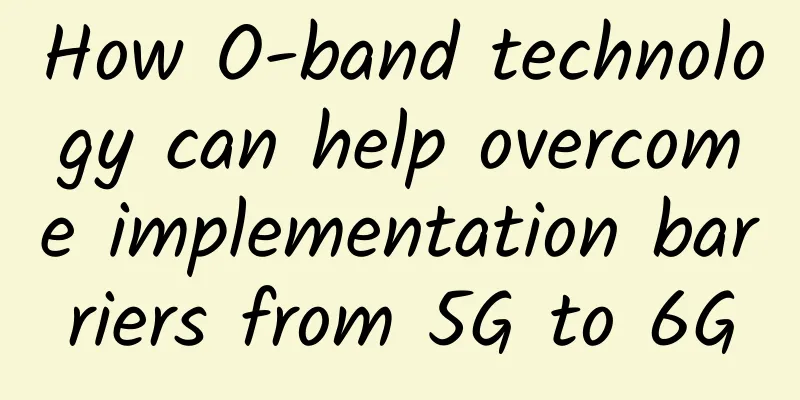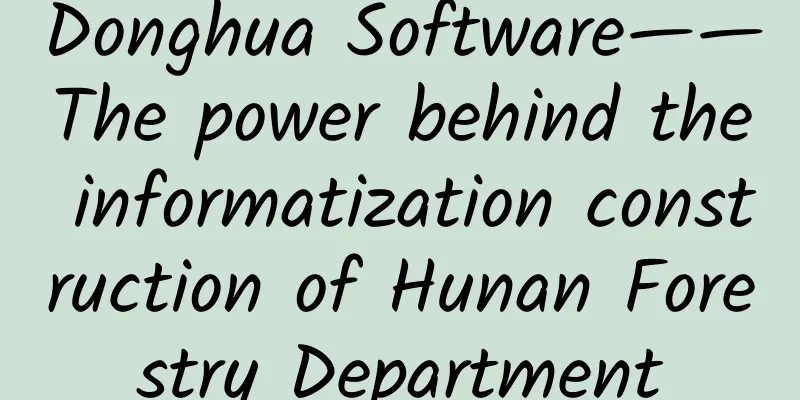EPM business-finance integration is gaining popularity. How does FONE break through the boundaries of financial digitalization?

|
Traditional financial services are no longer the goal that companies strive for. The accountant with a hunched back, bent waist, holding a water cup and wearing reading glasses is no longer the image spokesperson of finance. Today, finance has been integrated into all business activities of enterprises and has become an important "dashboard" for enterprise managers to make business decisions. From the formulation of business goals, overall business planning, and comprehensive budget planning to the control, operation, and forecast analysis of financial indicators during the execution process... With the advent of the "business and finance integration" trend of EPM, the financial system has begun to move towards a new stage of continuous digital evolution, which has changed the previous state of separation between business and financial systems and integrated the two into a comprehensive consideration. By strengthening the functions of the financial department and providing forward-looking guidance for business development, the two sides form a positive cycle of mutual support and complementation. The extension of corporate services continues to expand, and the integration of business and finance has become an important direction Looking back at the Chinese enterprise service market that has been rising since 2013, areas such as IM, CRM, HR, expense control and reimbursement, and electronic signature were the hot areas in the first half. The common feature of these segments is that they can help the relevant functional departments of the enterprise to optimize work processes and achieve more efficient management. Since around 2018, with the further development of mobile Internet, the continuous growth of business data accumulated by enterprises and the improvement of data processing technology, enterprise customers have begun to pay attention to the analytical capabilities of enterprise software products. On the one hand, the main tracks of existing enterprise services, such as HR and CRM, are undergoing transformation. For example, the functions of CRM products have moved from the initial sales staff management to the core of customer relationship management - analyzing past sales actions and strategies to help make sales decisions. On the other hand, new segmented products such as EPM business-finance integration are also emerging. Traditional financial systems based on processes such as accounting, expense control, and reimbursement are relatively mature, and they help customers achieve basic digital capabilities; and next, products that meet deeper business analysis needs will become new opportunities. Among these deeper analysis and decision-making needs, financial-related needs are obviously one of the core, which also fits the needs of enterprises to pay more attention to the deep integration of finance and business in the digital transformation of finance. It can be seen that finance has been transitioning from a back-end business to a front-end business, from a feedback link to a rehearsal link. The three most important things for an enterprise: capital flow, information flow, and personnel flow, are all connected to finance, and its role has also changed from a supporting business to a middle-end and hub-type business. From this perspective, the market size of business-finance integration is larger than the previous market for pure financial software. In the existing market, the depth and difficulty of corporate competition are intensifying. The market calls for a new generation of digital tools that can improve corporate operational efficiency. This trend is breaking the boundaries between the original functional modules and levels of the enterprise, forcing the iteration and reorganization of the enterprise software ecosystem. Since around 2000, business and financial integration has been mainly achieved through ERP systems. However, the ERP systems of the past emphasized the use of one system to meet all needs from business to finance. This all-encompassing approach places too high demands on the system, and the final outcome is often a compromise, barely achieving support for the business. Therefore, a mature EPM business-finance integration system should be composed of the integration of business system and financial system. However, this brings new problems, namely, the difficulty of system integration is greatly increased. At the same time, the business system is separated from the constraints of the financial system, which also leads to a significant increase in the error rate of business data. The solution is to carry out the construction of the middle platform. The EPM business-finance integration that evolves towards a middle platform will take on the functions of providing financial rules, data processing, data storage and data analysis. Since it verifies, converts and integrates the data of all business systems, the financial accounting system and the business analysis system will obtain unified and accurate data, thereby speeding up financial accounting and analysis. Because the business system is no longer constrained by financial rules and does not need to process too much financial data, it can achieve maximum flexibility and quickly meet the needs of business changes. Such a modular system design can not only achieve cross-system sharing between master data, business data and application modules, but also integrate with the IT system through component plug-in, becoming a more efficient implementation form. In addition, lightweight is also one of the important trends of EPM's "business and finance integration" in the future. Traditional financial systems deployed locally may only be updated once every few years, and customers need to pay for the new version; while the lightweight model of SaaS cloud deployment can be updated instantly, and customers can use the latest version without even noticing it. The advantage of this service increases customer stickiness. The "2021 China EPM "Business and Finance Integration" Industry Research Report" recently released by iResearch Consulting also shows that EPM business and finance integration will develop in the direction of middle-platform and lightweight, with the focus on the comprehensive application of all-round technologies such as cloud native, data system construction, big data, GPU, and AI. How to build EPM business-finance integration with platform + product + scenario to make it more valuable? Behind the rapid development of EPM business-finance integration is the fact that the increasingly developing business digital environment has put forward higher requirements for data processing capabilities. For those corporate customers with a good IT foundation and a certain system replacement cost, they will also have to choose lighter and more flexible systems to adapt to the rapidly iterating external market and frequent business adjustments. The lighter posture further helps EPM's integrated business and financial products open up a wider source of customers, expanding the customer base from large enterprises to small and medium-sized enterprises, which is a much larger "downstream market" for enterprise services. After all, the number of large group companies is limited. According to data from the National Bureau of Statistics, the number of large enterprises in China currently does not exceed 50,000. EPM business-finance integrated vendors represented by FONE are able to respond to customer business changes more quickly due to their technical architecture native to the big data era and cloud environment, providing a new path for digital financial management of enterprises. FONE mainly focuses on core management demands such as comprehensive enterprise budget management, report consolidation, sales performance management, and management reports, and can help enterprises plan their business, empower finance, and help implement corporate strategies to achieve the "small goal" of reducing costs and increasing efficiency. Since its establishment, FONE has continuously invested a large amount of R&D resources in product development, taking product development as the internal driving force for the long-term development of the company and actively building core technology barriers. FONE has broken through the performance boundaries of traditional EPM products through its self-developed M-OLAP (real-time online computing engine), meeting users' needs for real-time computing and agile adjustment, so that users can get better support in later use and expansion. Based on a reliable and efficient technology platform, FONE has now built an EPM product matrix including FONE Planning comprehensive budget products, FONE FC consolidated report products, FONE SPM commission rebates, etc. In terms of experience, FONE strives to provide customers with better application and service experience, mainly in terms of direct sales and channels. In terms of direct sales, it introduces more outstanding business and consulting teams to provide users with a rich product portfolio and business services. In terms of delivery, FONE chooses to collaborate with four major strategic consulting agencies, leading integrators, and upstream and downstream manufacturers to launch better overall solutions to meet the different needs of users, continuously improve the quality of software delivery, and provide users with high-quality maintenance services, truly realizing that software products provide value to users. From the development of FONE, we can see that every step of its development is closely related to the development of EPM business and finance integration. With the development of enterprises and market changes, it is also exploring in step with the times. In view of the new requirements of enterprises for business forecasting, abnormal situation discovery and handling, and how to deal with such situations, and the agile adjustment capabilities of the system, FONE's products and services emphasize the ease of use and high performance of the products. Users can configure them by themselves, while meeting the performance requirements of scenarios such as rapid prediction. In addition to introducing new technologies such as AI algorithms, FONE is also integrating more deeply into the overall information architecture of enterprises, which can be seen from the Market Place (business and finance application market) launched by FONE this year. In order to ensure that enterprises achieve the best experience of EPM business-finance integration, FONE fully focuses on user experience from the user's perspective, infiltrates the goal of improving corporate benefits into products and services, and presses the "accelerator" for corporate business innovation. Compared with the basic digitization of financial systems, EPM business-finance integration systems that can meet the business analysis and decision-making support needs of enterprises have the opportunity to obtain excess dividends in the wave driven by big data. FONE is at the center of the financial digitization trend and is bound to become the biggest beneficiary. If we view an enterprise as an ecosystem, when the financial department is reformed, it will bring about changes in the surrounding micro-environment, which in turn will bring about changes in systems, processes, and data, which will in turn affect the enterprise as a whole and improve the efficiency of all departments. Just like the butterfly effect, the financial digital transformation led by EPM business-finance integration will not only have a profound impact on the entire industry, but will also create a broader new world for enterprises. |
<<: All websites must complete IPv6 transformation by the end of the year? MIIT responds
>>: An article about Google Cherry IPU
Recommend
Operators' operating data in April: 5G package users increased by 21.16 million, totaling about 870 million
The three major operators released their operatin...
Scenario-based × disruptive innovation: polishing the minimalist "light" with users
"Users asked for an optical network solution...
[Christmas] DMIT: $100/year-2GB/40G SSD/2TB@2Gbps/Los Angeles CN2 GIA
DMIT has released two special Christmas packages,...
BuyVM: 1Gbps unlimited traffic VPS monthly payment starting from 3.5 Canadian dollars, Las Vegas/New York/Miami/Luxembourg and other data centers
BuyVM is a long-established foreign VPS hosting c...
5G development is not going smoothly, the number of fake 5G users has become the mainstream, and the three major operators have become the "root of the problem"
As we all know, Huawei's 5G technology is the...
How to Make Ethernet Cable Longer
Looking to extend your existing Ethernet cable, o...
HTTPS - Why TLS 1.3 provides better performance and security?
TLS v1.2 was released in August 2008. Ten years l...
6G is coming, how will the business change?
The next generation (6G) transmission technology ...
iQIYI Annual Card + JD Plus Membership Annual Card 138 RMB
This year, the prices of various video and music ...
TCP Things 1: TCP Protocol, Algorithm and Principle
TCP is a very complex protocol because it has to ...
Healthcare and smart city services will lead 5G IoT adoption
Juniper Research predicts that by 2026, there wil...
Interviewer asked: What is a dynamic proxy?
[[439196]] This article is reprinted from the WeC...
Expert opinion: AI is still very "weak", how can it compete with humans?
[51CTO.com original article] "I am neither a...
Verizon to launch 5G home internet service in Cleveland
Verizon announced Wednesday that it will launch 5...
SD-WAN architecture requires a new approach to network management
Software-defined networking (SDN) has become an i...








![[11.11] Maxthon Hosting 6.8% off, US/Korea/Japan/Hong Kong VPS monthly payment starts from 34 yuan, top up 660 yuan and get 110 yuan](/upload/images/67cabd0a5bb1a.webp)
